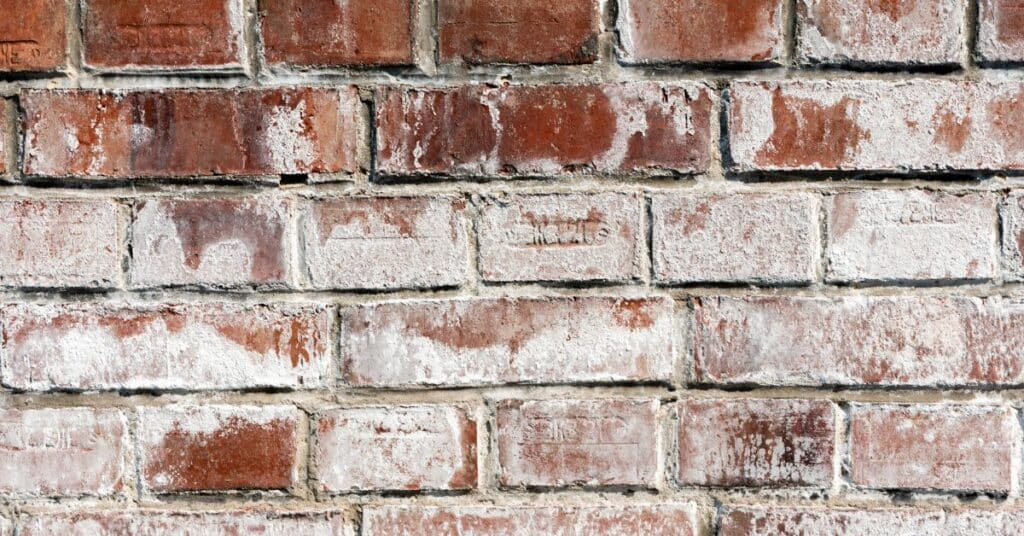Why Is My Chimney Turning White? The Causes of Efflorescence

Table of Contents
Discovering that your chimney is turning white can be alarming. This phenomenon, known as efflorescence, is an aesthetic issue and can indicate underlying problems. In this article, we delve deep into the causes of efflorescence and discuss whether it poses a risk to your chimney’s structural integrity.
What is Efflorescence?
Efflorescence is a white, powdery substance that can appear on the surface of bricks, including those in your chimney. This occurs when water-soluble salts within the bricks are dissolved by moisture and brought to the surface. When the water evaporates, it leaves behind a crystalline salt deposit that gives the chimney a white hue.
What Causes Efflorescence On Brick?
Various factors can cause efflorescence to occur:
- Water Infiltration: This is the primary cause, where water seeps into the chimney through cracks or porous materials, dissolving the salts present in the bricks.
- High Humidity: In areas with high humidity levels, the moisture can facilitate the movement of salts to the surface of the bricks.
- Faulty Construction: Sometimes, flaws in construction, like inadequate flashing or lack of a chimney cap, can allow water to penetrate the structure, leading to efflorescence.
- Using Salty Water in Construction: If salty water was used during the construction phase, it can contribute to higher chances of efflorescence occurring later on.
Understanding the root cause of the efflorescence is essential in formulating the right solution to mitigate its impact and prevent future occurrences.
Is Efflorescence Bad For A Chimney?
Efflorescence is not harmful to the chimney; it’s more of an indicator of moisture issues that must be addressed. If left unchecked, the underlying moisture problems that cause efflorescence can lead to more severe complications, such as:
- Structural Damage: Continuous water infiltration can weaken the chimney structure, causing bricks to loosen or the mortar to erode.
- Mold Growth: The presence of moisture creates a conducive environment for mold growth, which can affect the indoor air quality of your home.
- Decreased Property Value: Aesthetically, efflorescence can diminish the appeal of your home, potentially affecting its market value.
To prevent further issues, consult with a chimney expert, like The Mad Hatter, to address the underlying causes of efflorescence and make repairs as needed.
Call The Mad Hatter if There is White Staining On Your Chimney Bricks
If you notice white staining on your chimney bricks, don’t hesitate to contact the experts at The Mad Hatter. We specialize in diagnosing and resolving chimney issues, ensuring the longevity and safety of your chimney structure. Our team will conduct a thorough inspection to identify the root cause of the efflorescence and propose the best solutions to rectify the issue, preventing potential damage and safeguarding your investment.
While efflorescence is not a cause for panic, it is a sign that your chimney needs professional attention. Trust in the expertise of The Mad Hatter to restore your chimney to its pristine condition.
FAQ About Efflorescence on Brick
Is efflorescence on brick a problem?
Efflorescence on brick is not a direct problem, but it signals the presence of moisture which can lead to serious structural issues if not addressed promptly.
How do I permanently get rid of efflorescence?
To permanently get rid of efflorescence, it is essential to address the underlying moisture issues. This might include repairing leaks, improving ventilation, and applying a sealant to protect against water infiltration.
How do I stop efflorescence coming back?
Stopping efflorescence from coming back involves preventative measures such as ensuring proper water drainage, using quality water-resistant materials during construction, and regularly inspecting and maintaining your chimney to prevent water infiltration.
Will efflorescence eventually stop?
Efflorescence might eventually stop once the source of the moisture is eliminated and all soluble salts have migrated to the surface and been washed away. However, if the moisture issue persists, efflorescence will continue to recur.
Does efflorescence mean mold?
Efflorescence doesn’t mean mold; they are different issues. Efflorescence is salt deposits, whereas mold is a fungus that grows in damp environments. However, the moisture causing efflorescence can also create a conducive environment for mold growth.
Should I be worried about efflorescence?
While efflorescence itself is not harmful, it indicates underlying moisture issues that can lead to structural damage, mold growth, and other problems over time. It is advisable to address efflorescence promptly to prevent potential complications.
